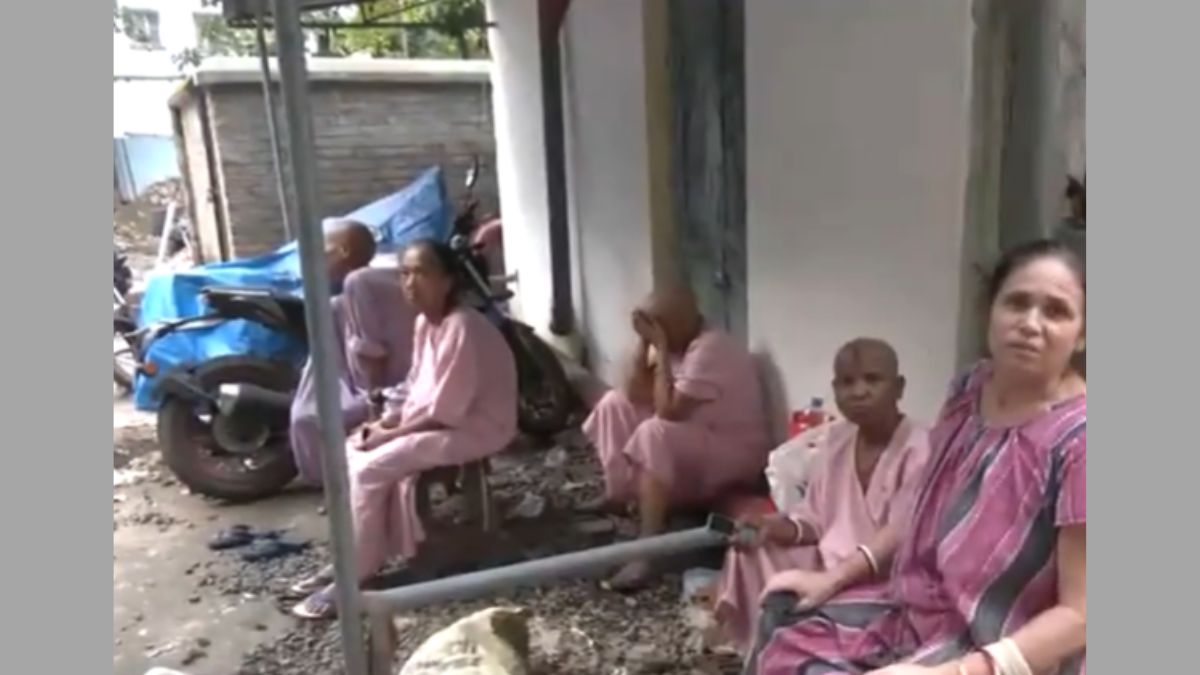A devastating fire erupted at the ESI Hospital in Sealdah, Kolkata, early this morning, leading to a significant emergency response and tragically resulting in the loss of one life. The incident underscores the critical importance of robust fire safety measures in healthcare facilities and highlights the potential consequences of neglecting such protocols. The fire, which started in one of the hospital wards, prompted the immediate evacuation of approximately 80 patients, many of whom were subsequently transferred to other hospitals for treatment. The swift action of emergency services prevented a potentially far greater catastrophe, although the investigation into the precise cause of the fire and the circumstances surrounding the patient’s death is ongoing. This event serves as a stark reminder of the vulnerability of hospitals and the need for comprehensive fire safety strategies. The chaos and fear experienced by patients, their families, and hospital staff emphasize the profound impact of such events on a community’s well-being.
The Kolkata ESI Hospital Fire: A Tragic Event
The Immediate Aftermath
The fire at the ESI Hospital in Kolkata resulted in immediate and widespread panic. Eyewitness accounts describe a chaotic scene, with patients and their families gathered outside the building, many visibly distressed. The rapid response of fire services, involving at least ten fire engines, was crucial in containing the fire and evacuating the trapped patients. While the majority were rescued successfully within approximately 20 minutes, the tragic loss of a patient in the ICU underscores the severity of the situation. Reports indicated that some patients were calling for help from windows, a harrowing illustration of the danger they faced. The speed of the evacuation is commendable, though it also highlights the potential for further incidents if safety measures aren’t improved. The swift transfer of remaining patients to other facilities ensured continuity of care, mitigating the immediate impact on health services.
Investigation and Official Response
The cause of the fire remains under investigation, a process crucial for preventing similar incidents in the future. The involvement of West Bengal’s Fire and Emergency Services Minister, Sujit Bose, emphasizes the government’s acknowledgment of the seriousness of the event. District Fire Officer TK Dutta described the situation as “terrifying,” highlighting the intense and dangerous conditions faced by both patients and responders. The ongoing investigation will not only pinpoint the cause of the fire but also analyze the hospital’s existing fire safety protocols to determine their adequacy and identify any areas needing improvement. Transparency throughout the investigative process will be key to rebuilding trust and ensuring accountability.
Fire Safety Protocols in Healthcare Facilities
Existing Measures and Shortcomings
The Kolkata hospital fire underscores the critical need for robust fire safety measures in healthcare facilities. Hospitals, by their very nature, house vulnerable populations who may have limited mobility or require constant medical supervision, making their safety paramount. Existing protocols should include regular fire drills, clearly marked evacuation routes, easily accessible fire extinguishers, and a comprehensive staff training program in fire safety procedures. This incident highlights the urgent need to evaluate the efficacy of existing protocols and consider possible enhancements. The detailed investigation will be crucial in revealing any failures or gaps in these protocols that contributed to the tragic outcome and scale of the event.
Improving Safety for the Future
Beyond a thorough post-incident investigation, steps should be taken to improve hospital fire safety nationwide. Regular inspections and audits of fire safety equipment, as well as mandated training for hospital staff in the use of fire safety measures, should be prioritized. Investment in modern fire detection and suppression systems is vital to minimizing risk. Furthermore, clear, accessible evacuation plans for all patients, staff, and visitors, regularly practiced in fire drills, are essential. Public awareness campaigns emphasizing fire safety procedures can further empower individuals within these facilities. Hospitals should also maintain comprehensive records of fire safety checks, which will assist investigations into future events, ensuring rapid investigation. The event should serve as a nationwide impetus for improving the quality of healthcare safety protocols across the country.
Impact and Lessons Learned
Community Trauma and Public Response
The Kolkata hospital fire inflicted not just immediate physical damage, but also widespread emotional distress. The scenes of chaos and fear witnessed by those present, particularly the patients and their loved ones, will likely leave lasting psychological impacts. The swift transfer of patients to alternative care facilities demonstrates concern for patient welfare, yet the event has undoubtedly shaken the community’s trust and confidence in the hospital’s preparedness. The public response, particularly the sharing of information and footage on social media, showcases both community concern and highlights the value of citizen involvement in maintaining safe public services. Addressing the community’s anxieties is essential in moving forward from this event.
Long-Term Implications and Prevention
The long-term implications of this event extend far beyond the immediate aftermath. The loss of a patient’s life is a stark reminder of the potentially tragic outcomes of inadequate fire safety measures. Strengthening fire safety protocols in hospitals isn’t merely a matter of compliance; it’s about preserving lives and maintaining public trust in the safety and security of these vital facilities. Further training initiatives focusing on the specific needs of high-risk populations and better integration of safety measures into hospital design and maintenance plans are vital aspects of broader improvements. This is a case of tragedy prompting improvement, to both avoid repetition and demonstrate a true commitment to patient welfare and staff safety. This demands significant financial and political investment.
Take Away Points:
- The Kolkata ESI Hospital fire highlighted critical shortcomings in fire safety protocols within healthcare facilities.
- The tragic loss of life underscores the urgent need for robust fire safety measures and regular training for all staff.
- Comprehensive investigations are essential to identify the cause of the fire and implement necessary improvements.
- A multi-pronged approach, including regular inspections, updated equipment, and public awareness campaigns, is crucial for preventing future incidents.
- Addressing the emotional trauma experienced by patients, families, and staff is vital in the aftermath of such an event.




